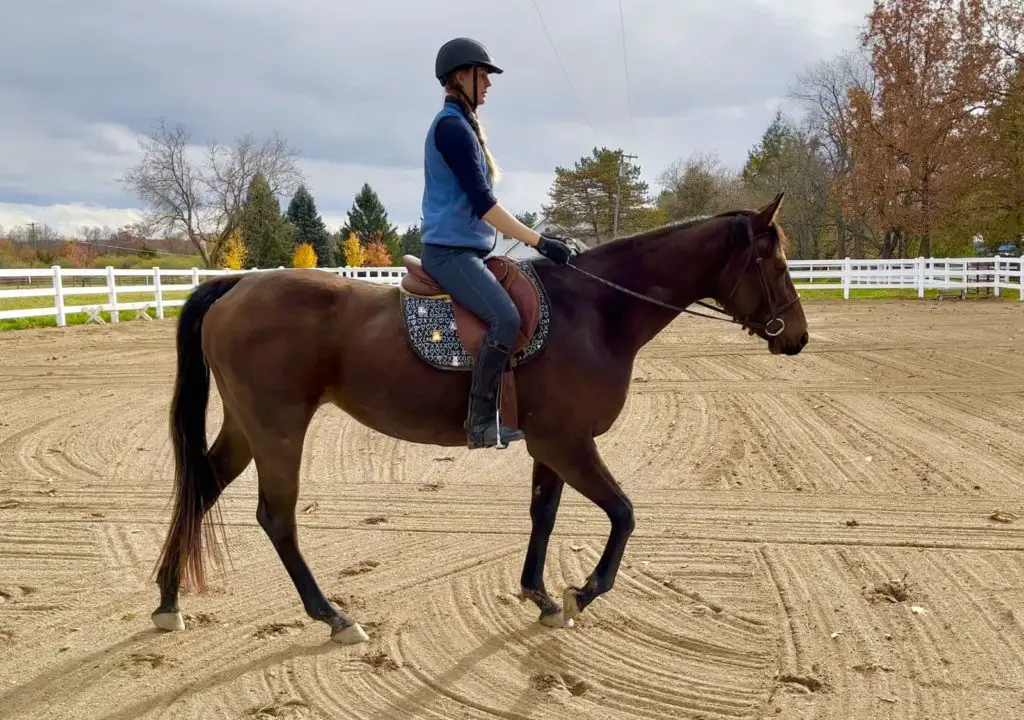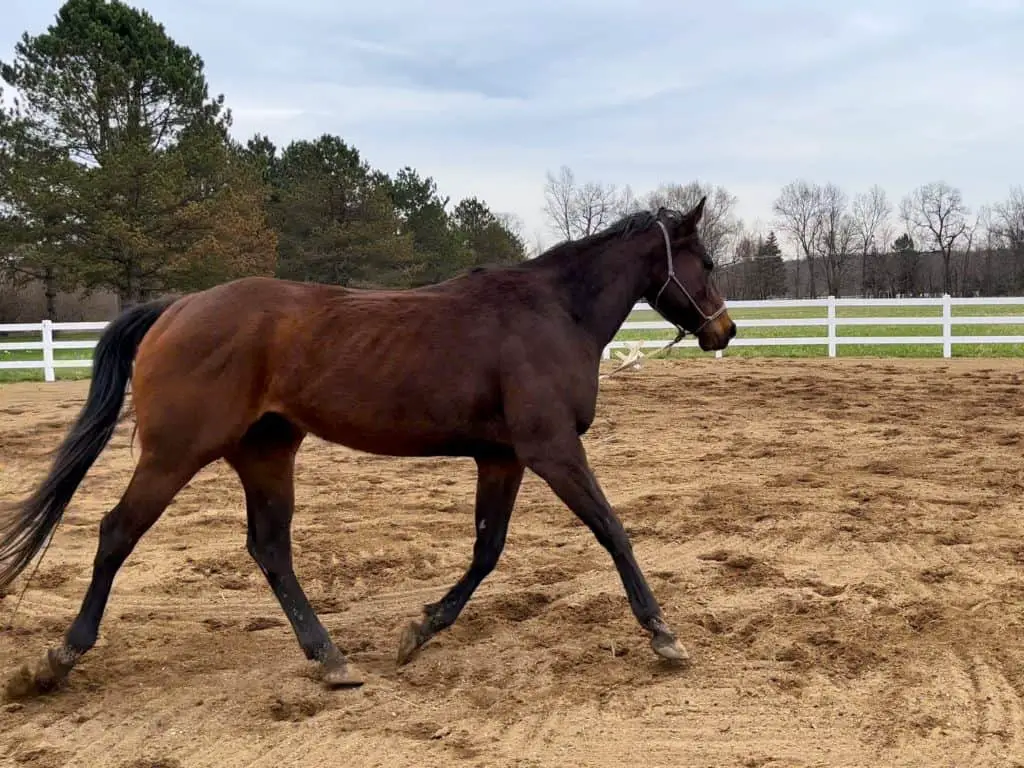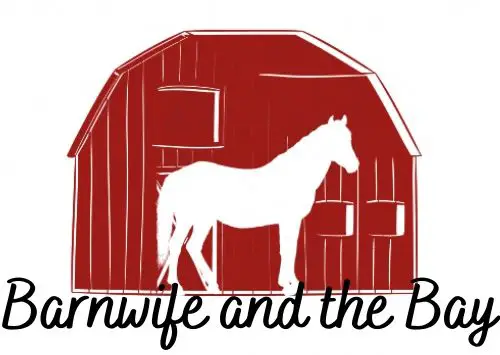Today is the first anniversary of the day I brought The Bay home. I think this is the perfect time to reflect on our relationship, my horse training goals, and what we’ve accomplished together so far.
Long-term goals for us as a team
The Bay is my forever horse, and my forever project. I adopted her because I felt that her temperament, age, and background were a perfect match for me. After riding her, I felt that as a non-professional horse trainer I could still have success training her. It wasn’t very clear if she would enjoy jumping and dressage, but there was a reasonable chance she could succeed at the levels I am aiming for. Based on what I have seen so far, I have already decided hunters will probably be a better fit for her than jumpers. She’s not very fast, which may be a reason she failed race training.
Long-term, my goals for us are first and foremost to know and trust each other and enjoy each other’s company. Show goals will mostly be dictated by how we progress over the years and what she tells me she’s up for. There are many local shows in dressage and hunters, and I think we can be successful, especially at the lower levels.
Where we started
The Bay ended her race training as a two-year-old, and came to me as a three-year-old last spring. She had been worked with some by a volunteer at the rescue where she landed, but she hadn’t had much re-training. She did not understand direct-rein steering very well, had no concept of the meaning of rein contact or leg pressure, and her stop cue was very hit-or-miss. There had been no canter work introduced.
In hand, she led very respectfully and had some concept of backing up and yielding her hindquarters. She did not know how to yield her shoulders or lunge.
What we have done this year
This past year was all about small steps and details. We didn’t achieve anything big, but started building a foundation of balance, quality gaits, and obedience.
Knowing I am not a professional trainer, I go slow. I don’t want to make any mistakes that could have been avoided by going slower. The Bay’s temperament and learning style is fitted to this approach. She does not need a very fast-paced training environment to stay engaged.
We began with lots of ground work, focusing on lunging. She can now walk, trot, and canter on the lunge with correct bend and understands voice and body language cues to change speed or stop and face me.
I made sure she knows how to do things like back up and yield hindquarters and shoulders from a body language or pressure cue.
Under saddle, she now understands steering, and the difference between a direct rein and outside supporting rein. She understands leg pressure for speed control and steering. She accepts rein contact and stops off of my seat or reins. Her rein-back and turn on the forehand are solid, and we have just started to introduce a leg-yield.
What we still have not done is canter under saddle. All of last year I felt she was struggling to balance herself and find the correct lead on the lunge. She also had a tendency to blast off with her hindquarters and leap into more of a gallop. I wanted to make sure she was confident, balanced, and in control of the gait before asking for it under saddle.
Related: How To Adopt Your Perfect Horse
What I hope to accomplish in the next year
My horse training goals will be paused, or at least slowed, for the next year. My pregnancy and postpartum period will last into the fall. I will likely not be riding again until then, and in Michigan without an indoor, the weather can put a stop to serious riding in November or December. So we’ll probably spend most of the year on more in-hand work and lunging. My focus will be on conditioning her, helping her find her balance, and fine-tuning obedience. It’ll also be a good opportunity to work on building The Bay’s confidence. Then next spring, we can finally begin heading out on the trails and going to shows.
Like this article? Want to learn more? Jump into these too!
- Training my own horse: Imposter Syndrome
- Speak in a way that your horse wants to listen
- 24 best dressage horse breeds (plus nontraditional breeds)
- How to adopt your perfect horse
- 21 best horse breeds for larger or heavy riders
- 19 Important mental health benefits of horse sports
- 5 things I wish I knew before bringing horses home

We went back to basics under saddle

Lots of ground work
